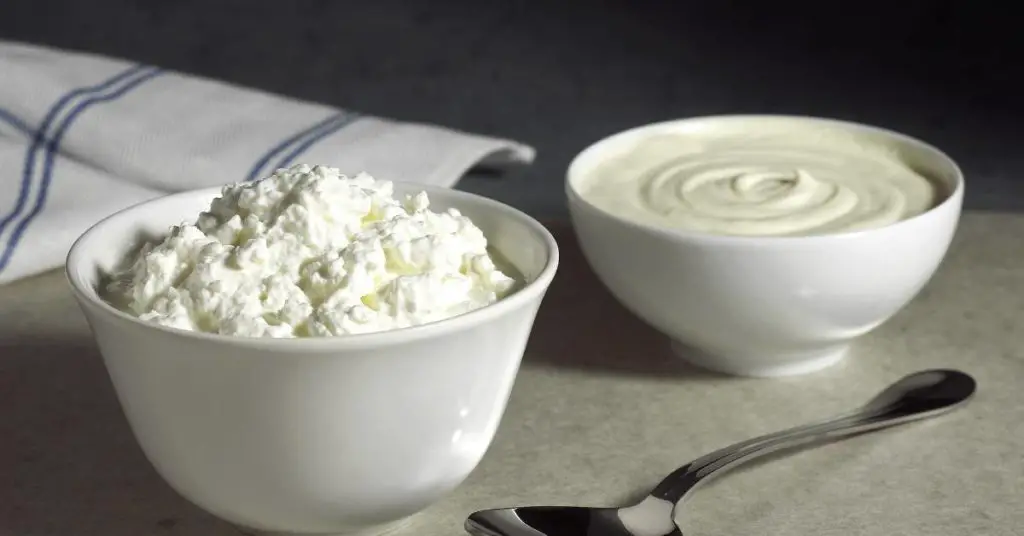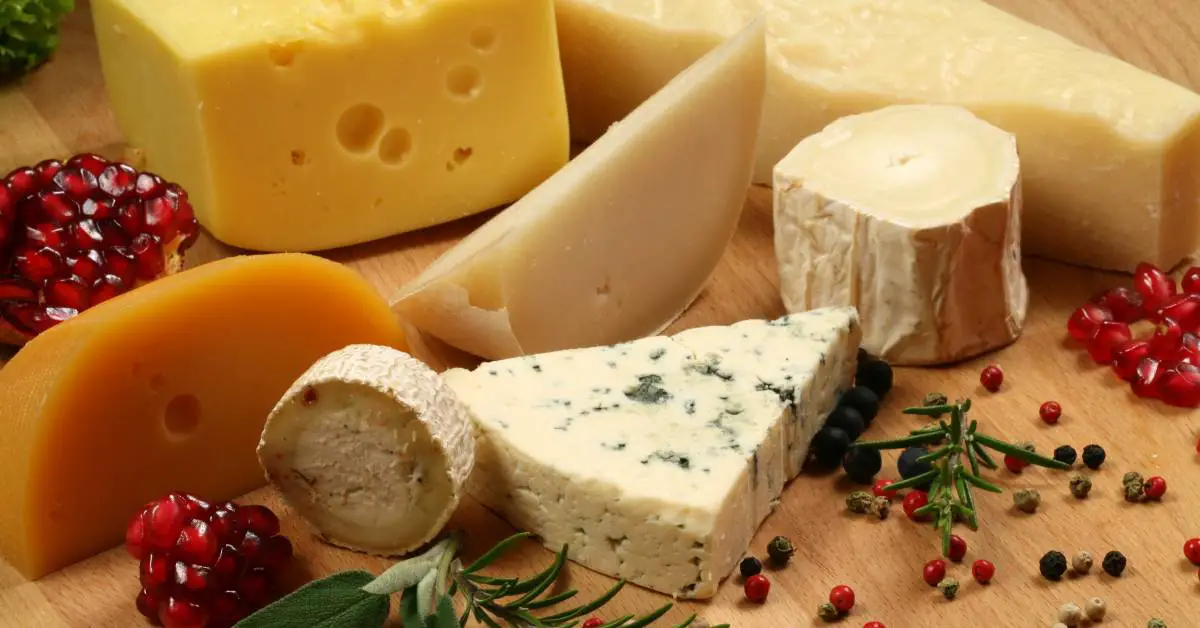Is there cheese with low histamine? Cheese is a popular food around the world. From a simple grilled cheese sandwich to a fancy charcuterie board, there’s a cheese for every occasion and palate.
If you love cheese but suffer from histamine intolerance, you might wonder if there are any low histamine cheeses that you can enjoy without triggering unpleasant histamine intolerance symptoms. You may already know that some types of cheese are off the menu if you have histamine, due to their high histamine content. (1)
The good news is that there are cheese varieties considered low in histamine, but also some to avoid due to their high histamine content.
Why Is Some Cheese High Histamine?
Cheese makers create mouthwatering cheese from the milk of various animals, including sheep, cows, and goats. (2) It’s a fermented dairy product (3), and during the fermentation process, the bacteria introduced to the milk naturally produces histamine.
Did you know that the amount of histamine in cheese can vary widely? Factors that affect the histamine content of cheese include how it’s produced, how long it’s aged, and the ingredients a cheese maker or manufacturer adds to it.
Generally, aged cheeses have higher levels of histamine compared to fresh cheeses. This is because histamine also accumulates over time as the cheese ferments and ripens, as there’s nothing in the cheese that can break it down. As cheese ages, the bacteria that accumulate produce more histamine.
Plus, some types of bacteria used in the cheese-making process produce higher levels of histamine than others. For example, certain strains of lactic acid bacteria produce significant amounts of histamine during cheese production.

So just like any other food, how cheese is made, handled, and stored will affect its histamine level. But there are certain types of cheese you should avoid with histamine intolerance, because they contain higher levels of histamine.
But you should also be aware that the amount of histamine in hard cheese can vary dramatically, depending on how it’s manufactured or stored.
Some types of cheese that are high in histamine (as a general rule) are:
- Hard cheeses, like Emmental
- Cheddar cheese
- Alpine cheese
- Parmesan cheese
- Blue Cheese
- Brie
- Carmembert
One study that analyzed the histamine content of various types of cheese found a range of histamine quantities in milligrams per 100 grams: (4)
- Colby 0.3–2.8
- Camembert 0.4–4.2
- Cheddar 1.2–5.8;
- Gouda 1.3–2.4
- Provolone 2.0–23.5
- Roquefort 1.0–16.8
- Mozzarella 1.6–5.0
- Swiss 0.4–250
As one discussion paper points out, there are cases of histamine poisoning related to the consumption of cheese. (5) It also found that cheese is the most common cause of histamine poisoning after fish. Some cheese can have very high levels of histamine.
Some of the highest histamine levels were found in a Swiss American cheese with levels of 1475 –5630 milligrams per 100 grams, and Almkase with a level of 1159.7 per 100 grams.(5) So, as you can see, some cheese can be exceptionally high in histamine.
The amount of histamine in these samples would be enough to trigger adverse effects, even in people without histamine intolerance. As the paper points out, most healthy people don’t experience symptoms of histamine overload when they consume less than 50 milligrams of histamine per meal.
But if you have histamine intolerance, your tolerance could be much lower, as you can’t break it down as well.
Avoid Cheese Made with Raw Milk
Another type of high-histamine cheese is cheese made from raw milk. Cheese made from raw, or unpasteurized, milk often contains more histamine compared than cheese made from pasteurized milk. When cheese makers use raw milk to make cheese, it contains natural bacteria that can produce histamine as the cheese ages. This often gives the cheese a stronger flavor and aroma that some people enjoy, but also a higher histamine content. Almost all farm-gate cheese is made from raw milk.

Low-Histamine Cheese Options
If you’re looking for low histamine cheese options, let’s look at some of the most common types of low-histamine cheese. With cheese, fresh is the name of the game. Here are some options that are usually lower in histamine.
- Mild full-fat cheese
- Dutch-type cheese
- Ricotta cheese: A creamy cheese made from whey (the liquid left over from making other cheeses) that has a slightly sweet flavor and a smooth texture. You can use it as a spread on bread or crackers or in pasta dishes, assuming they’re low histamine.
- Mozzarella cheese: A stretchy cheese made from cow’s milk or buffalo milk that has a mild flavor and a soft texture. People eat it on sandwiches or pizza.
- Mascarpone cheese: A rich cheese made from cream that has a sweet flavor and a velvety texture.
- Cottage cheese: A soft cheese made from curdled milk that has a mild flavor and a lumpy texture. You can eat it plain or mixed with low-histamine fruits. Cottage cheese is also high in protein and a good source of calcium. Cottage cheese contains little or no histamine.
- Cream cheese: Cream cheese is a type of spreadable cheese that is incredibly versatile and delicious. It has a smooth, creamy texture and a slightly tangy flavor that makes it a perfect addition to many recipes. Like cottage cheese, cream cheese is mostly free of histamine.
What about Processed Cheese?
Manufacturers often use Emmental cheese, a high-histamine cheese, to make processed cheese foods. It might be tempting to pick up packaged cheese slices, but I would avoid them due to their heavy processing and additives.
Guidelines for Choosing and Storing Low-Histamine Cheese
- Look for fresh cheese varieties, the fresher, the better. Farmer’s Markets are a good source for finding fresh, locally made cheeses, and you can usually sample them before buying.
- Avoid aged and fermented cheeses, as well as cheese made from raw milk.
- Check the ingredients label for any additives or preservatives that may increase histamine levels or trigger reactions. For example, some cream cheeses may contain thickeners or stabilizers that are not well tolerated by some people with histamine intolerance.
- Store your cheese properly in the fridge or freezer to prevent spoilage and bacterial growth. Use an airtight container or wrap your cheese tightly in plastic wrap or foil. Consume your cheese within a few days of opening or freezing it.
Conclusion
Is there cheese with low histamine? Yes, soft, fresh cheese may contain low levels of histamine and is your best bet if you have histamine intolerance. But remember that how cheese is processed and stored will affect how much histamine it contains. So, if you eat low-histamine cheese, like a soft cheese, keep a food journal and track your symptoms, so you’ll know how your body responds.
References:
- Moniente, Marta, Diego García-Gonzalo, M. Goretti Llamas-Arriba, Jone Garate, Vicente Ferreira, Arrate Jaureguibeitia, Raquel Virto, Rafael Pagán, and Laura Botello-Morte. 2022. “The Significance of Cheese Sampling in the Determination of Histamine Concentration: Distribution Pattern of Histamine in Ripened Cheeses” 171 (October): 114099–99. https://doi.org/10.1016/j.lwt.2022.114099.
- “Cheese | The Nutrition Source – Harvard T.H. Chan School of Public Health.” https://www.hsph.harvard.edu/nutritionsource/cheese/.
- González-Córdova AF, Yescas C, Ortiz-Estrada ÁM, De la Rosa-Alcaraz MLÁ, Hernández-Mendoza A, Vallejo-Cordoba B. . FAQ: Microbes Make the Cheese (2023). Available at: https://www.ncbi.nlm.nih.gov/books/NBK562892/ (Accessed: 15 May 2023).
- Chambers TL, Staruszkiewicz WF Jr. Fluorometric determination of histamine in cheese. J Assoc Off Anal Chem. 1978 Sep;61(5):1092-7. PMID: 721726.
- (2023). Available at: https://acmsf.food.gov.uk/sites/default/files/acm_1193_histamine%20in%20cheese%20%28paper%29.pdf (Accessed: 15 May 2023).

